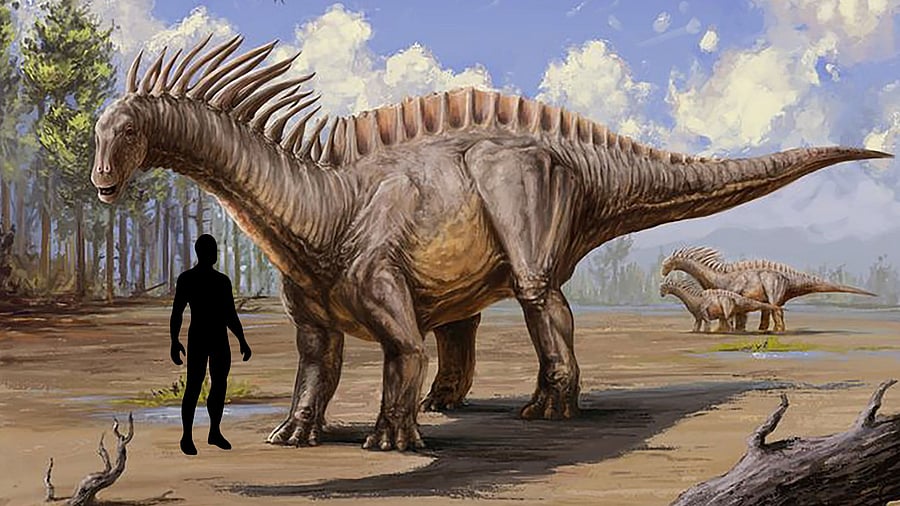
Scientists previously found fossils of two other sauropods from India, but Tharosaurus is a more evolved creature.
Credit: Special Arrangement
Indian palaeontologists have unearthed one of the world’s oldest fossils of a long-neck, plant-eating dinosaur from Thar desert offering a new theory on how such gigantic sauropods originated in a prehistoric land mass housing India and subsequently moved to other parts of the world.
The dinosaur has been named Tharosaurus indicus after the desert and is the oldest known member of a family of the ancient creatures called Diplodocoidea. A more famous member of the same family is diplodocus, made popular by blockbuster movies like Jurassic Park.
“Tharosaurus is half of a size of a diplodocus. Its neck-to-tail length is about 10-13 mt while that of for a diplodocus was around 26 mt,” Sunil Bajpai, a veteran fossil hunter at the Indian Institute of Technology, Roorkee and leader of the team told DH.
The fossils were found by researchers from the Geological Survey of India, and were studied in collaboration by a team led by Bajpai.
The fossils included parts of vertebrae and ribs on the basis of which they assigned them to a new genus and species in the sauropod family Dicraeosauridae, which belongs to the larger group of Diplodocoidea.
Sauropods are plant-eating dinosaurs with long necks, long tails, small heads (relative to the rest of their body), and four thick, pillar-like legs. They are notable for the enormous sizes attained by some of the species.
The group includes some of the largest animals to have ever lived on land such as Brachiosaurus, Diplodocus, Apatosaurus and Brontosaurus.
Scientists previously found fossils of two other sauropods from India, but Tharosaurus is a more evolved creature.
“Previous fossils were of Barapasaurus tagorei and Kotasaurus. They were primitive species that were around in the early Jurassic period (200-191 million years ago) whereas Tharosaurus was 167 million years old,” Bajpai said.
Scientists in the past had argued that such dinosaurs might have originated in modern-day China and Americas, but the IIT-GSI researchers team observed that Indian fossils were older than the Chinese ones by at least two million years. “That is a significant difference,” Bajpai said.
Based on the age of Tharosaurus and its position in the phylogenetic tree, India (or a geographically proximate region of eastern Gondwana) is hypothesized as a potential centre for the radiation and perhaps origin of diplodocoids, the team reported last week in Scientific Reports. Palaeogeographic reconstruction supports such a hypothesis.
“Primitive sauropods which were ancestors of the more evolved diplodocoids have been found in India and now we have found the oldest diplodocoid. Only the intermediate groups are missing,” said Debajit Datta, one of the team members from the IIT. “This supports our theory of Indian origin and dispersal.”
"Sauropods are considered to have originated in the Late Triassic/Early Jurassic but their origin and radiation are still amongst the most contentious issues. The Indian discovery provides new insights into sauropod diversity of the Indian Gondwana, with important implications for their origin and dispersal," they reported.
